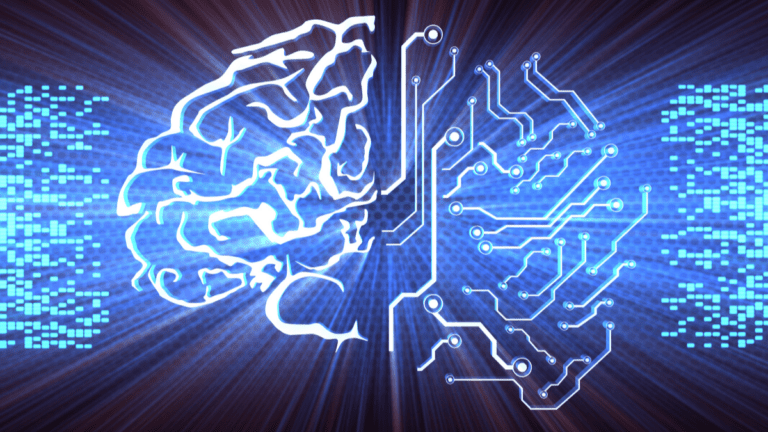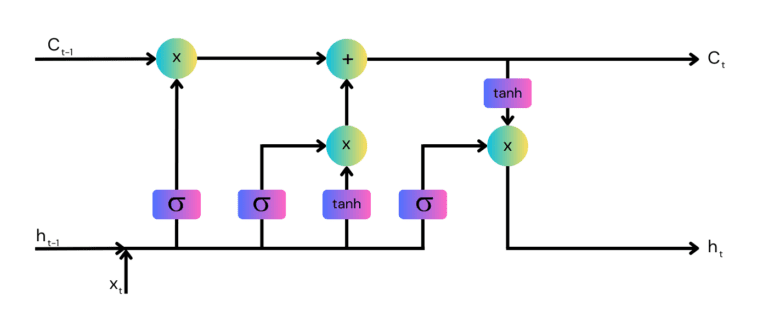
What Is Generative AI?
Generative AI uses machine learning (ML) models to produce new data that resembles the original data input. The fascinating aspect of Generative AI is its ability to create entirely novel content, ranging from images to music, text, and more. It mimics the human creative process, generating artifacts that are similar to, and even superior in some respects, to those created by humans.
Some of the most frequently used models in Generative AI are variational autoencoders (VAEs), generative adversarial networks (GANs), and large language models (LLMs). These models stand out in the machine learning world because of their ability to generate new data from scratch, rather than merely processing or analyzing pre-existing data.
The potential applications of Generative AI are vast. They include creating realistic images based on natural language prompts, generating 3D models, producing synthetic data for training machine learning models, and powering a new generation of AI chatbots which generate human-like text and code.
What Is Predictive AI?
While Generative AI focuses on creating new data, Predictive AI is all about forecasting future outcomes based on past data. It’s a technology that uses statistical algorithms, and machine learning techniques to identify the likelihood of future outcomes.
Predictive AI models are largely used in business intelligence and strategic decision-making processes. They help businesses forecast future trends, customer behaviors, and market developments. These predictions enable organizations to proactively respond to potential opportunities and threats, thereby enhancing their competitive edge.
Commonly used predictive AI models include time series, linear regression, logistic regression, decision trees, and neural networks. Common applications of predictive AI include forecasting stock market trends, predicting customer churn, automating risk assessment in finance, and even anticipating disease outbreaks in healthcare.
Generative AI vs. Predictive AI: Key Differences
1. Purpose and Goals
Generative AI aims to create new, original content or data that matches the structure and style of its training data. The goal is to generate output that is indistinguishable from real, human-created content. This capability is applied in various creative domains like literature, art, music, fashion, and even in scientific fields like drug discovery.
Predictive AI, on the other hand, is all about forecasting future outcomes based on past data. Its primary goal is to provide accurate, reliable predictions that can guide decision-making processes. It is instrumental in domains where accurate predictions can save time, conserve resources, and prevent damage, in fields like weather forecasting, healthcare, finance, and marketing.
2. Input and Output Requirements
Generative AI requires a large dataset that represents the kind of output it’s supposed to generate. For instance, to generate new images of faces, Generative AI would need a substantial dataset of real face images. The output is new images that mimic the structure of the training data (i.e. creates images that look like faces) but is unique in its specifics (new faces not included in the dataset).
Predictive AI, on the other hand, requires historical data about the event or phenomenon it’s supposed to predict. The more data it has, the better its predictions. The output is a prediction or forecast about future events based on patterns identified in the past data. The output of predictive AI algorithms can be numeric (for example, predicting a specific value of a stock) or categorical (for example, predicting whether a customer will churn or not).
3. Model Architectures
In the past, Generative AI typically used unsupervised learning methods, where the AI is given a dataset and asked to find patterns and relationships on its own. A common example of unsupervised Generative AI is GAN, where two neural networks work together to continually improve the generated output.
Modern generative AI algorithms are based on the Transformer architecture, which uses a semi-supervised learning method, with unsupervised pre-training followed by supervised fine-tuning.
Predictive AI typically uses supervised learning methods, where the AI is trained on a labeled dataset to make predictions. The architecture of predictive models can vary widely depending on the specific use case, but they often use time series, regression techniques, decision trees, or deep learning methods.
4. Use Cases
Generative AI has found use cases in a variety of fields, primarily in creative and design domains. It is used to generate new music, create digital art, design 3D models, write stories, and even in scientific fields like drug discovery, where it can generate potential new chemical compounds.
Predictive AI is widely used in business intelligence and analytics. It is used to forecast sales, predict customer behavior, detect fraud, predict machinery breakdown in manufacturing, and in healthcare for disease prediction.
Generative AI Pros and Cons
One of the main advantages of generative AI is its ability to create new and original content. This can be particularly beneficial in creative fields such as art, music, and writing. Generative AI can also be used in data augmentation, which is the process of increasing the amount of data available for training ML models. By creating synthetic data, generative AI can help improve the performance of machine learning models, especially in scenarios where data is scarce.
However, generative AI has its limitations. One of the major challenges is the need for large amounts of data to train the models. This can be a hurdle, especially in cases where data is limited or sensitive. Additionally, the quality of the generated content can be inconsistent. It is difficult to instruct models to create exactly the output users need, a concept known as steerability. In the case of models that generate textual outputs, those outputs can sometimes provide convincing but incorrect information, a phenomenon known as hallucination.
Predictive AI Pros and Cons
One of the significant advantages of predictive AI is its ability to aid in decision-making processes by providing insights into future trends, behaviors, and outcomes. This foresight is invaluable in sectors like finance, healthcare, and marketing, where anticipating future events can lead to better strategies and improved outcomes. Predictive AI also helps in risk assessment, identifying potential problems before they occur, and in optimizing resources by forecasting demand and supply needs.
However, predictive AI has its limitations. The accuracy of its predictions is heavily dependent on the quality and quantity of the historical data it is trained on. Inaccurate or biased data can lead to incorrect predictions, potentially causing significant issues, especially in critical applications like healthcare or finance. Predictive AI also struggles to make accurate predictions in the face of unprecedented events or changing data patterns, and therefore their accuracy tends to degrade over time, a phenomenon known as data drift.
Generative AI vs. Predictive AI: How to Choose?
Choosing between generative and predictive AI depends on the specific needs and goals of a project or organization. If the objective is to create new, unique content or data, such as in artistic, literary, or design applications, generative AI is the appropriate choice. It is also suitable when there’s a need to augment existing datasets for training other machine learning models. Generative AI’s ability to produce novel outputs makes it a powerful tool in fields where creativity and innovation are prized.
On the other hand, if the focus is on forecasting future events, understanding trends, or making decisions based on past data, predictive AI is more suitable. It is ideal for scenarios where predicting outcomes can lead to proactive measures, such as in finance, marketing, healthcare, or supply chain management.
The decision also depends on the available data – while generative AI requires large, diverse datasets to produce new content, predictive AI needs historical data with clear patterns and outcomes to make accurate predictions.
Testing and Evaluating Generative and Predictive Models with Kolena
We built Kolena to make robust and systematic ML testing easy and accessible for all organizations. With Kolena, machine learning engineers and data scientists can uncover hidden behaviors of generative and predictive ML models, easily identify gaps in the test data coverage, and truly learn where and why a model is underperforming, all in minutes not weeks. Kolena’s AI / ML model testing and validation solution helps developers build safe, reliable, and fair systems by allowing companies to instantly stitch together razor-sharp test cases from their data sets, enabling them to scrutinize AI/ML models in the precise scenarios those models will be unleashed upon the real world. Kolena platform transforms the current nature of AI development from experimental into an engineering discipline that can be trusted and automated.
Among its many capabilities, Kolena also helps with feature importance evaluation, and allows auto-tagging features. It can also display the distribution of various features in your datasets.
Reach out to us to learn how the Kolena platform can help build a culture of AI quality for your team.



